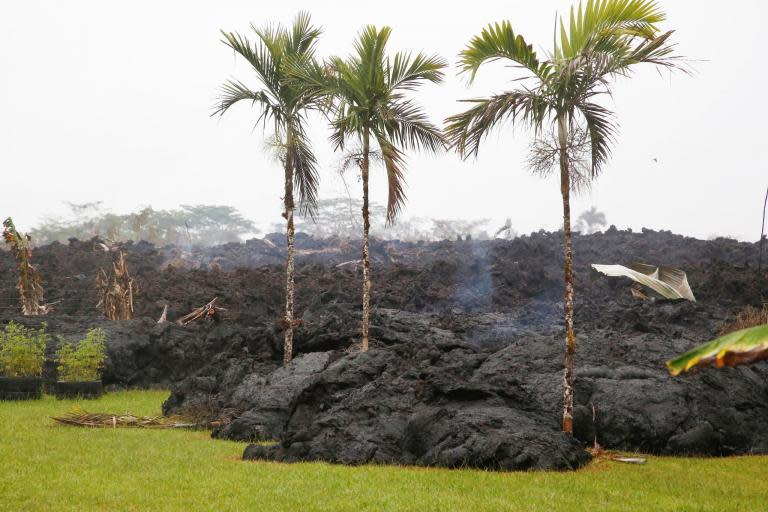Hawaii volcano: Why the eruption of Kilauea could be so terrifyingly deadly
Hawaii's Kilauea volcano has already shocked the world by sending massive walls of lava into houses and eating up cars, and spreading acid rain across the island. But that might just be the beginning.
Experts fear that the complex system underneath the volcano could be about to reach a new stage, which could see a blanket of ash and boulders the size of fridges thrown out of the volcano.
"We know the volcano is capable of doing this," said Charles Mandeville, volcano hazards coordinator for the U.S. Geological Survey, citing similar explosions at Kilauea in 1925, 1790 and four other times in the last few thousand years. "We know it is a distinct possibility."
If those things are thrown out, they could easily kill the people below them. As such, people are being advised to stay out of closed areas of the national park that surrounds the volcano, where they should be safe.
"If it goes up, it will come down," said Charles Mandeville. "You don't want to be underneath anything that weighs 10 tons when it's coming out at 120 mph (193 kph)."
The explosion will be so dramatic because of the structure of the volcano. Recent events have been changing the make-up of the volcano – and bringing about the explosive situation.
The lava lake in the volcano is in a rapid retreat – as shown in pictures released by the USGS this week. If it keeps going down, as it has done quickly, then it could trigger a run of events that would bring about ballistic effects.
In little more than a week, the top of the lava lake has gone from spilling over the crater to almost 970 feet (295 meters) below the surface as of Thursday morning, Mandeville said. The lava levels in the lake are dropping because lava is spewing out of cracks elsewhere in the mountain, lowering the pressure that filled the lava lake.
"This is a huge change. This is three football fields going down," Mandeville said.
The fear is that it will go below the underground water table — another 1,000 feet further down — and that would trigger a chain of events that could lead to a "very violent" steam explosion, Mandeville said.
At the current rate of change, that is about six or seven days away.
Once the lava drops, rocks that had been superheated could fall into the lava tube. And once the lava drops below the water table, water hits rocks that are as hot as almost 1,200-degrees Celsius and flashes into steam. When the water hits the lava, it also steams. And the dropped rocks hold that steam in until it blows.
A similar 1924 explosion threw pulverized rock, ash and steam as high as 5.4 miles into the sky, for a couple of weeks. If another blast happens, the danger zone could extend about 3 miles around the summit, land all inside the national park, Mandeville said.
Related Video: New Evacuations in Hawaii Triggered By Kilauea Volcano
Additional reporting by agencies


